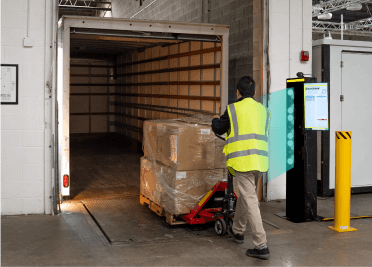What drives the requirement for accurate, high-quality labels? With so much hanging in the balance for manufacturers and retailers competing on a global scale, there’s no good reason to ignore the need for label quality. Mislabeled packaging could have consequences that range from wasted product to (potentially severe) consumer health issues. For example:
- Undeclared ingredients can lead to allergic reactions and recalls. (Did you know inaccurate labels are one of the top reasons for food recalls?)
- Missing marks can lead to fines.
- Unscannable labels can lead to costly returns and chargebacks.
- Illegible labels can lead to reprints, reporting errors and even lost inventory – all of which waste labor and financial resources.
And these are just a few of the many reasons why it’s critical to ensure the accuracy and legibility of product and packaging labels. Today, I want to point out the four things that most often prompt organizations to reevaluate their labeling strategies and ultimately invest in label verification technology solutions:
General product traceability
Product traceability, in a general sense, is essential for consumer safety, regulatory compliance and overall quality perception. If there’s a problem with a product, traceability allows the consumer, retailer or another entity to quickly locate and segregate defective products. This is especially beneficial in the event of a recall and to ensure compliance with regulatory mandates, such as those that improve visibility into the location and use of medical equipment, raw materials and more.
In fact, companies paid up to $24 billion USD in recalls in 2018 for reasons including misprinted labels, and just last year a major auto manufacturer was fined $20 million for failing to adhere to recall procedures mandated by the National Highway Traffic Safety Administration (NHTSA), a government body. The Automotive Industry Action Group (AIAG) has even defined common transport label standards to facilitate the easy and compliant movement of goods and the exchange of data among all members of the supply chain.
Life sciences industry regulations
In most life science-related industries, and particularly in the medical device and pharmaceutical industries, there are regulatory requirements requiring that labels are legible, show the correct content, and contain barcodes of a minimum quality.
Noncompliance with respect to labeling can lead to warning letters from regulatory bodies and recalls. In fact, label issues have historically been one of the top three causes of recalls in the pharmaceutical industry. According to the Sedgwick Brand Protection Recall Index, there was a 22% increase in medical device recalls from 2019 to 2020.
Large retailers are also working to ensure quality compliance for pharmaceutical products. Amazon, for example, has begun imposing Food and Drug Administration (FDA) labeling requirements on firms selling supplements on its U.S. site. If a seller can’t demonstrate this compliance, the product will be removed. And the European Union (EU) has enacted strict traceability standards for pharmaceutical drug manufacturers to help mitigate the risk of counterfeit items entering the supply chain.
Customer-driven labeling specifications
Many manufacturers of higher value or higher risk items rely on proprietary, serialized label content to help mitigate the risk of counterfeit products entering the supply chain. Label authenticity can be controlled and verified by means of label inspection and serialization.
As an example, the recent report of counterfeit N95 masks entering the supply chain highlights the need for anti-counterfeiting strategies. Plus, compliance with GS1 labeling standards has been a key investment driver for verification infrastructure in regards to the serialization of retail merchandise and healthcare products.
Safety and brand protection
Most retailers require their suppliers to conform to certain specifications that define label content and printing quality. If retailers cannot receive product due to a poor-quality barcode or incorrect information within the barcode, they often return the product and issue a financial penalty to the supplier.
For example, one manufacturer of brooms and mops incurred costs in excess of $100,000 due to the use of an incorrect barcode type on the product packaging. This issue led to the manufacturer adopting a printer-integrated label inspection system to avoid such errors in the future.
THE POWER OF PRINTER-INTEGRATED LABEL INSPECTION
Printer-integrated label inspection systems are a highly effective way to prevent labeling errors and ensure that only high-quality barcodes make it onto final packaging. These systems are capable of analyzing 100% of all labels produced in a way that doesn’t slow down production. If an error is discovered, the system can be programmed to stop all printing immediately. (One such system that is integrated into the Zebra ZT600 series thermal printers is the Omron V275 barcode verification and print quality inspection system.)
In the long run, automated label inspection can dramatically increase a company’s competitive advantage by minimizing the likelihood of hefty fines or dissatisfaction among retailers and consumers.
To learn more and get started, contact us now to talk with an AbeTech Solution Expert.










